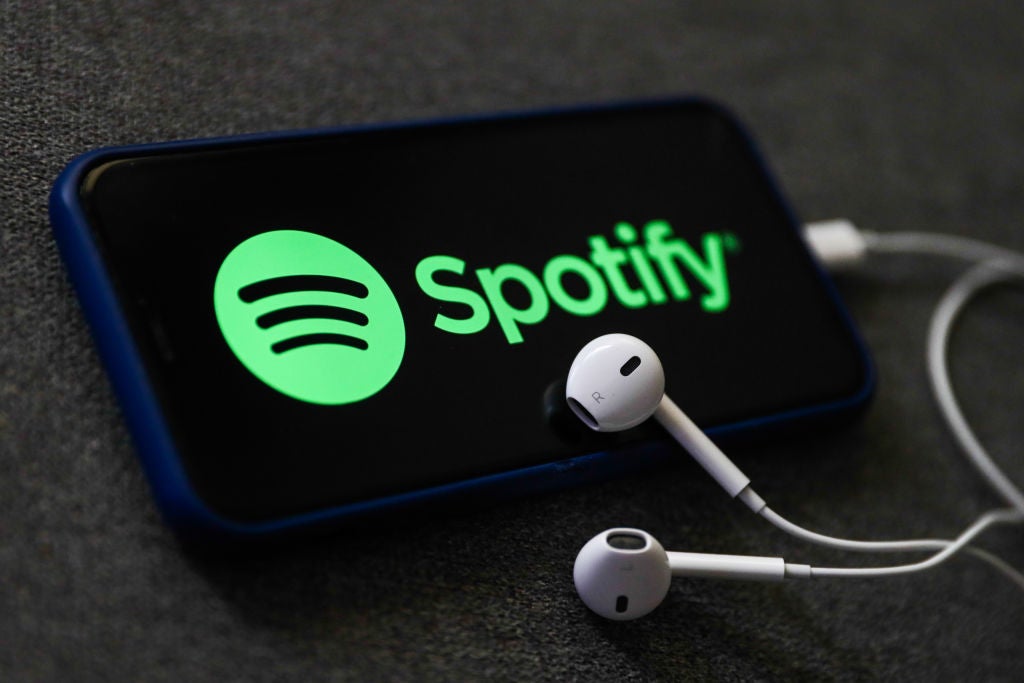Streaming giant Spotify shells out $9 billion in royalties in 2023
INDIANAPOLIS (WISH) — Spotify disclosed in its most recent “Loud and Clear” report that it disbursed $9 billion in streaming royalties over the past year.
Spotify’s annual report, first issued in 2021 amidst scrutiny for its lack of transparency, highlighted remarkable achievements, notably the highest annual payout by any music retailer to the industry.
“This is everything we know about how much is being paid out, how many artists are achieving different levels of success… So, everyone can have access to the information and be sort of up to date with the state of the industry,” Charlie Hellman, vice president and global head of music at Spotify, told the Associated Press.
Based on the statistics shared in the report for 2023, more than 1,250 artists earned at least $1 million each in recording and publishing royalties.
Additionally, over 11,600 artists earned over $100,000, and approximately 66,000 artists earned over $10,000. These figures represent nearly triple the numbers seen in 2017.
The report highlights that over half of the 66,000 artists mentioned originate from nations where English is not the predominant language, underscoring the growing diversity of the music industry on a global scale.
Additionally, independent artists, often characterized as self-distributed or operating under independent record labels, contributed significantly to the industry, accruing $4.5 billion in royalties, constituting half of Spotify’s total payouts.
“There are millions of people who’ve uploaded a song at least once but that doesn’t really speak to whether they’re an artist, or if they’re doing this more as a hobby,” Hellman says.
According to Hellman, Spotify zooms in on artists that have “at least put up an album’s worth of music once they seem to have some indication that they’re trying to build a fan base.” He estimates there are “about 225,000 professionally aspiring artists” on the platform.
“They have a little bit of a following. They might, you know, have gigs listed on Spotify or things like that,” he told AP.
In December, Spotify revealed plans to reduce its global workforce by 17%, marking the third round of layoffs in 2023. This decision came as part of the music streaming service’s efforts to cut costs and prioritize profitability.
Additionally, the previous month, Spotify announced a change in its payment policy, stating that songs with less than 1,000 annual streams would no longer receive compensation, effective from 2024 onwards.
“Songs that generate less than a thousand streams in a year would be generating pennies, a few cents in royalties,” Hellman explained. “So what we’re seeing was that there was an increasing amount of uploaders that had $0.03, $0.08, $0.36 sitting there.”
For DIY artists, there’s a specific threshold for withdrawing funds from distributors—$5.35 at DistroKid and $1 at TuneCore, two prominent platforms. Hellman contends that these withdrawal fees could surpass the actual royalties earned.
Streaming services like Spotify, along with most others, compensate rights holders based on a metric known as “streamshare.” This calculation involves tallying how frequently music owned or controlled by a particular rights holder is streamed, then dividing it by the total number of streams in the market.
In essence, larger rights holders command a greater portion of the market share. However, the percentage of a listener’s subscription fee received by an artist isn’t directly proportional to how often their music is streamed—streaming an artist 25% of the time doesn’t equate to the artist receiving 25% of the subscription fee.
“All those pennies sitting in bank accounts all over the place was siphoning money away from artists that were really doing this, as an aspiring professional,” Hellman said of the decision. “And so, those royalties are now being put in the pot so that they can be redirected to artists that are getting more than a thousand streams a year.”
Related coverage



